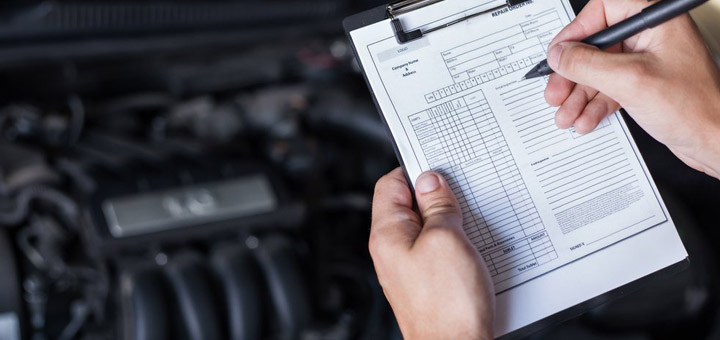A pre-trip inspection ensures your safety by making sure that everything in your vehicle is working properly. By detecting potential malfunctions, a pre-trip inspection keeps you safe as well as prevents expensive repairs later on. Maximize your safety and resilience on the road with our pre-trip inspection sheet tips.
The U.S. Department of Transportation (DOT) mandates that before driving a motor vehicle, the driver must satisfy three steps:
Ensure that the vehicle is in safe operating condition
Review the last driver’s vehicle inspection report
Sign your report to acknowledge it has been reviewed and that the required repairs have been formed
Some caveats to know about your pre-trip inspection sheet
The second step is necessary only if the previous driver reported a defect or deficiency with the vehicle. Additionally, the third step is not necessary when the listed defects belong to a towed vehicle that is no longer part of the vehicle combination. If you do not stay in compliance with DOT pre-trip inspections, you could accumulate a fine that will lower your Compliance, Safety, Accountability (CSA) score.
Now that you know about the federal requirement, there are several things you can do to satisfy step one of the mandate.
The most general and common areas on a pre-trip inspection include: 1) the engine compartment, 2) the fuel area, 3) brakes, 4) coupling system, 5) lights, 6) trailer, and other miscellaneous components.
The engine department
This part of the pre-trip inspection sheet includes inspecting:
The steering system
Front suspension system
Front brake system
Water pump
Hoses
Belts
Pitman arm
Castle nuts and cotter pins
Tie rod
For all these components, make sure they are properly mounted and secured. If any of these components are cracked or bent, make sure to replace them before hitting the road.
Fuel Area
Next, check that your fluid levels are adequate, and that battery levels have enough starting power to sustain your trip. The fuel area includes:
Fuel tank
Battery
Exhaust system
Mirrors
Airbag
Don’t make the rookie mistake of running out of gas!
Brakes
The brakes on your vehicle can be easier to inspect, and the general rule of thumb is to make sure there is no leaking air. Check the following to make sure you can navigate stops safely:
Brake hose
Brake chamber
Brake drum
Brake lining
Rim & lug nuts
The rim on your vehicle’s wheels should not have authorized welds. If there are trails of rust on your wheel’s lug nuts, it could be an indication that your bolts are loose. Make sure to tighten loose wheel fasteners.
While inspecting the skid plate of the fifth wheel, make sure it is properly lubed and greased. In addition, check to see that there is an adequate amount of space between the tractor’s mud flap and the trailer’s landing gear. If they are too close together, they will smack into each other on a turn. Lastly, make sure that the coupling system’s locking haws are fully locked around the kingpin.
Lights
Ensure your visibility and safety on the road by making sure that you can see other vehicles, and that other vehicles can see you. Check headlights, reflectors, brake lights, emergency flashers, and turn signals. Make sure to clean off any dirt or debris on your reflectors and lenses that could have accumulated over time to get that crystal clear vision.
Trailer
Ultimately, when inspecting your trailer, it’s important to check that it’s securely mounted to the tractor you definitely don’t want any trailer-related accidents. Keep in mind the following areas, and check that there are no cracks, bends, breaks, holes, or missing pieces.
It’s also in your favor to restock your emergency equipment kit. Bring a fully charged fire extinguisher, spare electrical fuses, red warning flags, and other parts and warning devices in the case of emergency. Underneath your truck, make sure there are no fluids on the ground. You may have to pop your hood to make sure your fluid levels are accurate and your pressure gauge is working properly.
In the cabin, inspect the fit of your seatbelt, and make sure there are no cracks or chips on your internal and external mirrors as well as on your windshield.




